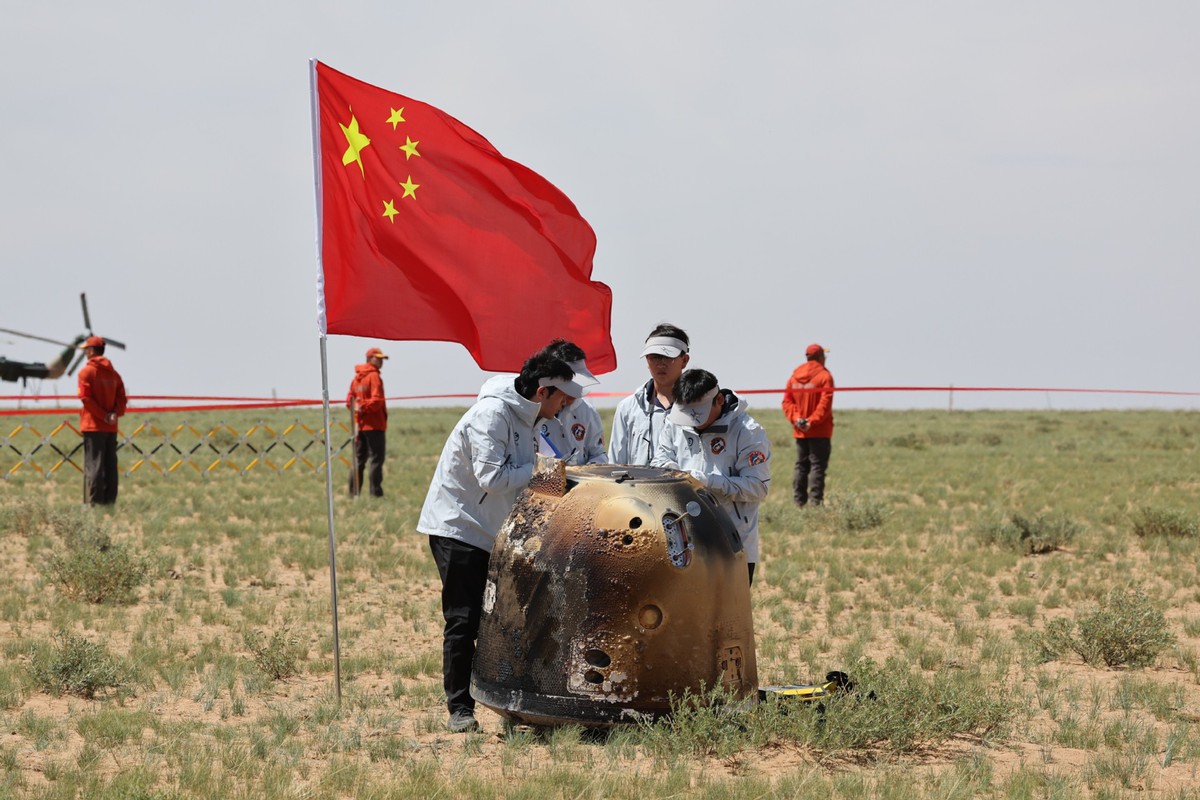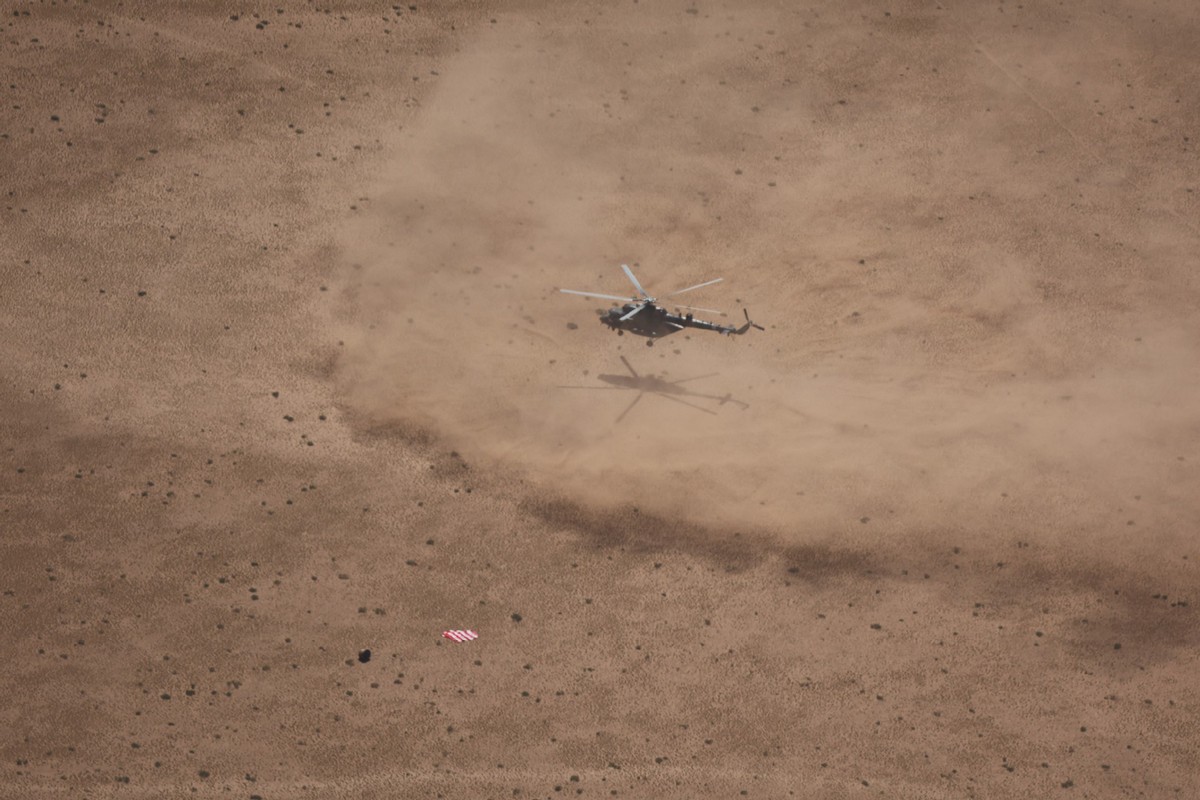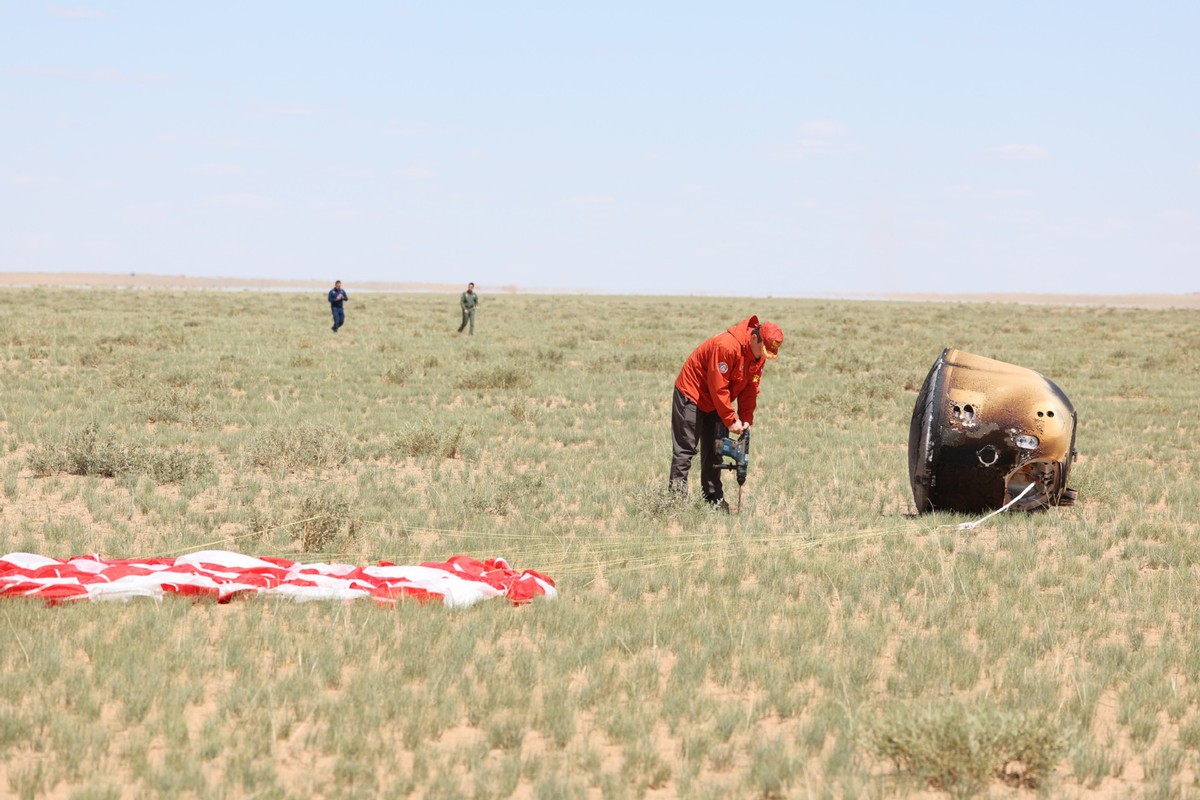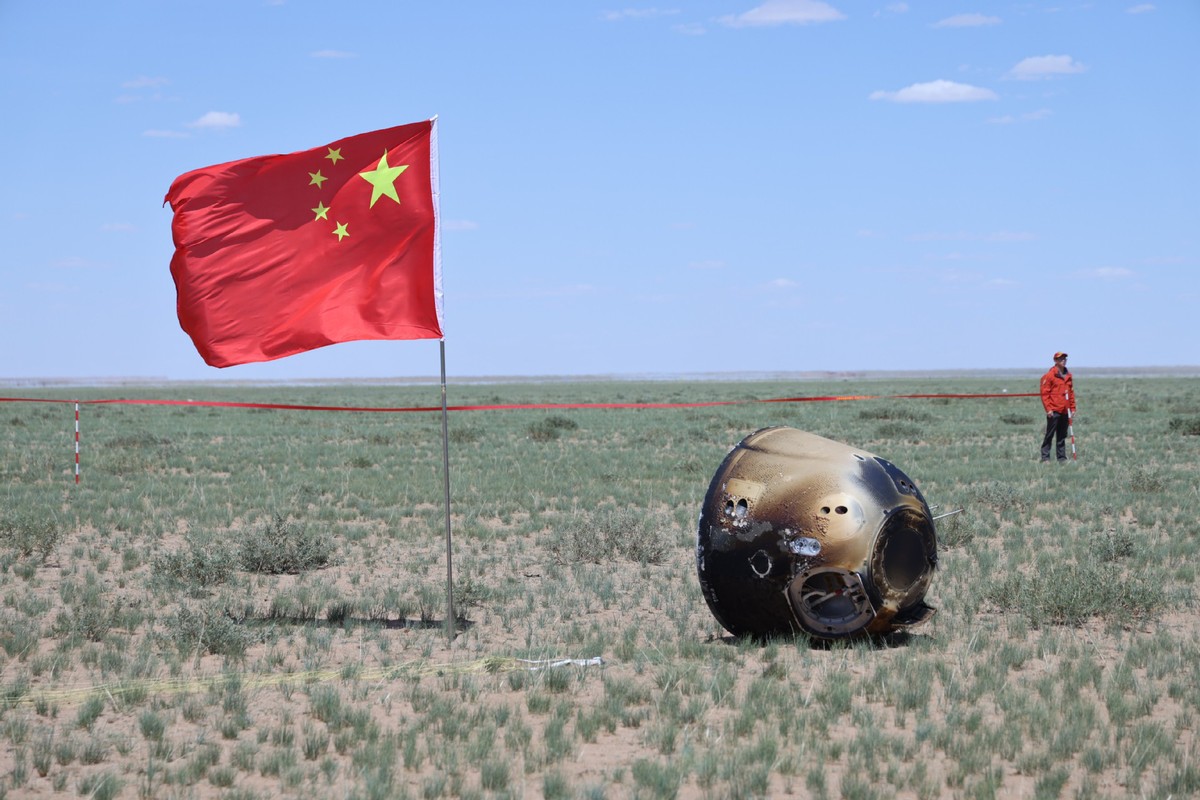June 26, 2024
SIZIWANG BANNER – China’s Chang’e 6 robotic mission finished successfully on Tuesday afternoon, bringing scientifically precious samples from the moon’s far side back to Earth for the first time.
Carrying the lunar samples, the Chang’e 6’s reentry capsule touched down at 2:07 pm on its preset landing site in Siziwang Banner of the Inner Mongolia autonomous region, putting an end to the 53-day voyage involving a host of complex, challenging maneuvers.
The reentry and landing processes started at around 1:22 pm when mission controllers at the Beijing Aerospace Control Center uploaded high-accuracy navigation data to the orbiter-reentry capsule combination that was traveling around Earth.

The return capsule of the Chang’e-6 probe lands in Siziwang Banner, North China’s Inner Mongolia autonomous region on June 25, 2024. PHOTO: XINHUA/CHINA DAILY
The capsule then separated from the orbiter about 5,000 kilometers above the southern Atlantic Ocean and began to descend toward Earth.
It entered the atmosphere around 1:41 pm at a speed close to the second cosmic velocity of 11.2 kilometers per second, and then bounced out of atmosphere in a maneuver to reduce its ultrafast speed.
After a short while, the capsule re-entered the atmosphere and kept gliding down.

The return capsule of the Chang’e-6 probe lands in Siziwang Banner, North China’s Inner Mongolia autonomous region on June 25, 2024. PHOTO: XINHUA/CHINA DAILY
When the craft was about 10 km above the ground, it released its parachutes and soon smoothly landed on the ground.
Shortly after the touchdown, recovery personnel sent from the Jiuquan Satellite Launch Center arrived at the landing site in helicopters and off-road vehicles.
The capsule will then be transported by plane to Beijing, where it will be opened by experts at the China Academy of Space Technology.

The return capsule of the Chang’e-6 probe lands in Siziwang Banner, North China’s Inner Mongolia autonomous region on June 25, 2024. PHOTO: XINHUA/CHINA DAILY
The Chang’e 6 mission, representing the world’s first attempt at bringing back samples from the far side of the moon to Earth, was launched by a Long March 5 heavy-lift carrier rocket on May 3 from the Wenchang Space Launch Center in Hainan province.
The 8.35-ton spacecraft was designed and built by the China Academy of Space Technology, a subsidiary of China Aerospace Science and Technology Corp, and consisted of four components — an orbiter, a lander, an ascender and a reentry capsule.
After a host of sophisticated steps, the lander touched down at the South Pole-Aitken Basin, one of the largest known impact craters in the solar system, on the morning of June 2.

The return capsule of the Chang’e-6 probe lands in Siziwang Banner, North China’s Inner Mongolia autonomous region on June 25, 2024. PHOTO: XINHUA/CHINA DAILY
The landing marked the second time a spacecraft has ever arrived in the lunar far side.
The vast region had never been reached by any spacecraft until January 2019, when the Chang’e 4 probe landed in the South Pole-Aitken Basin. The Chang’e 4 surveyed areas surrounding its landing site but did not collect and send back samples.
The Chang’e 6 lander worked 49 hours on the lunar far side, using a mechanical arm and a drill operated to collect surface and underground materials. Meanwhile, several scientific apparatus were activated to conduct survey and analysis assignments.
After the tasks were completed, the sample-loaded ascender lifted off from the lunar surface and reached lunar orbit to dock with the reentry capsule to transfer the samples.
In the final leg of the mission, the orbiter and the reentry capsule flew back to Earth orbit before separating on Tuesday.
Before this mission, all of the lunar substances on Earth were collected from the near side of the moon through the United States’ six Apollo manned landings, the former Soviet Union’s three Luna robotic missions and China’s Chang’e 5 unmanned mission.
The landscapes and physical characteristics of the far side, which permanently faces away from Earth, are very different from those of the near side, which is visible from Earth, according to scientists.
The new samples will probably offer researchers around the globe useful keys for answering questions about the moon, and will likely bring a range of invaluable scientific payoffs, they said.
The Chang’e 5 mission, which took place in the winter of 2020, gathered 1,731 grams of samples, the first lunar substances obtained since the Apollo era. It made China the third nation, after the United States and the former Soviet Union, to have collected lunar samples.
So far, Chang’e 5 lunar samples have enabled Chinese researchers to make a number of academic strides, including the discovery of the sixth new lunar mineral, named Changesite-(Y).


